We list the main errors that are allowed when building buildings from cellular concrete blocks, as well as give recommendations how to avoid them.
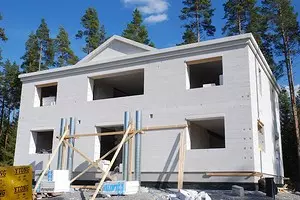
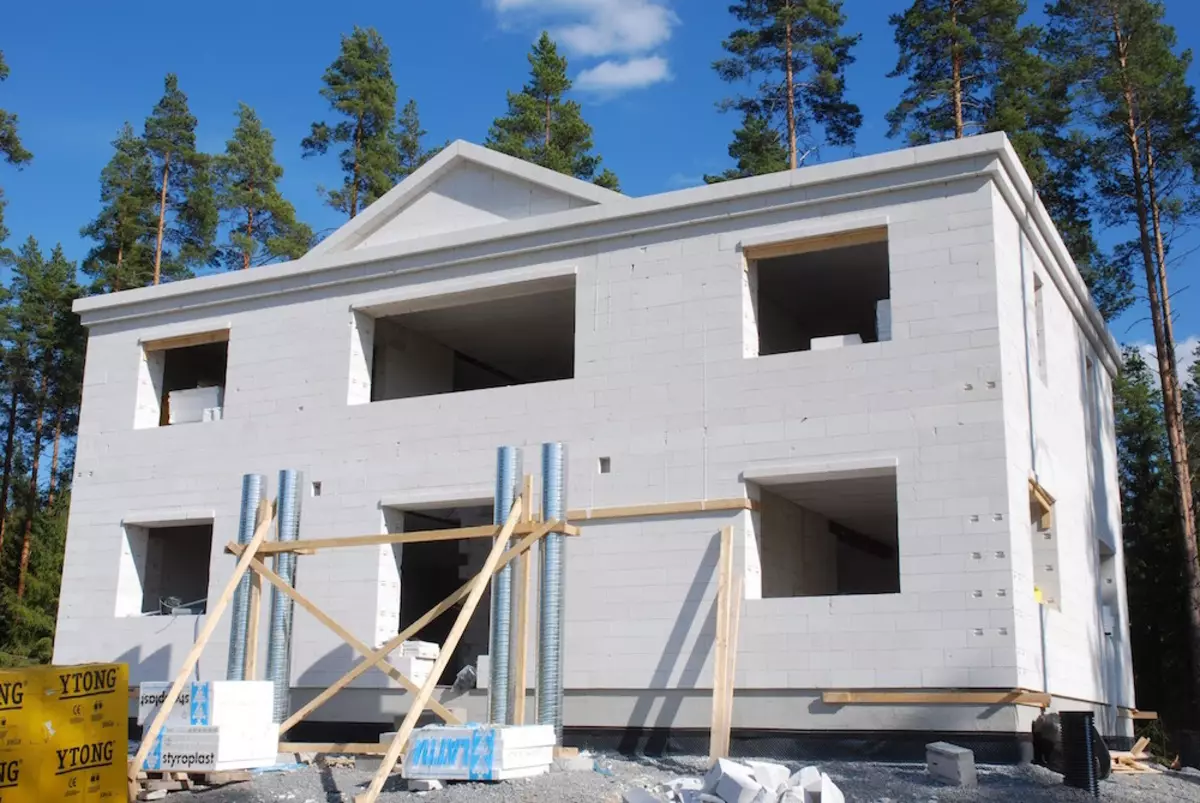
From cellular concrete build both country houses and cottages for permanent residence. In the first case, in the conditions of the Middle Russian climate, the walls make a thickness of 30 cm, in the second - 375 and more (or insulated outside). Photo: ytong.
1. Incorrect selection of the type of foundation
Blocks made of cellular concrete have a relatively low mechanical strength, they are extremely unstable to bending loads. Folded from this material of the wall poorly tolerate any deformations and are easy to crack if the foundation of the house begins to "play". From this point of view, the worst option of the base is a floating tape, especially if it is not safe on the plot everything is safe with geology (clay or loam, high groundwater level). The pile foundation is more reliable, but only with the painted painter, on which the frosty powders do not act. It is suitable for the house of foam blocks and insulated slab foundation.
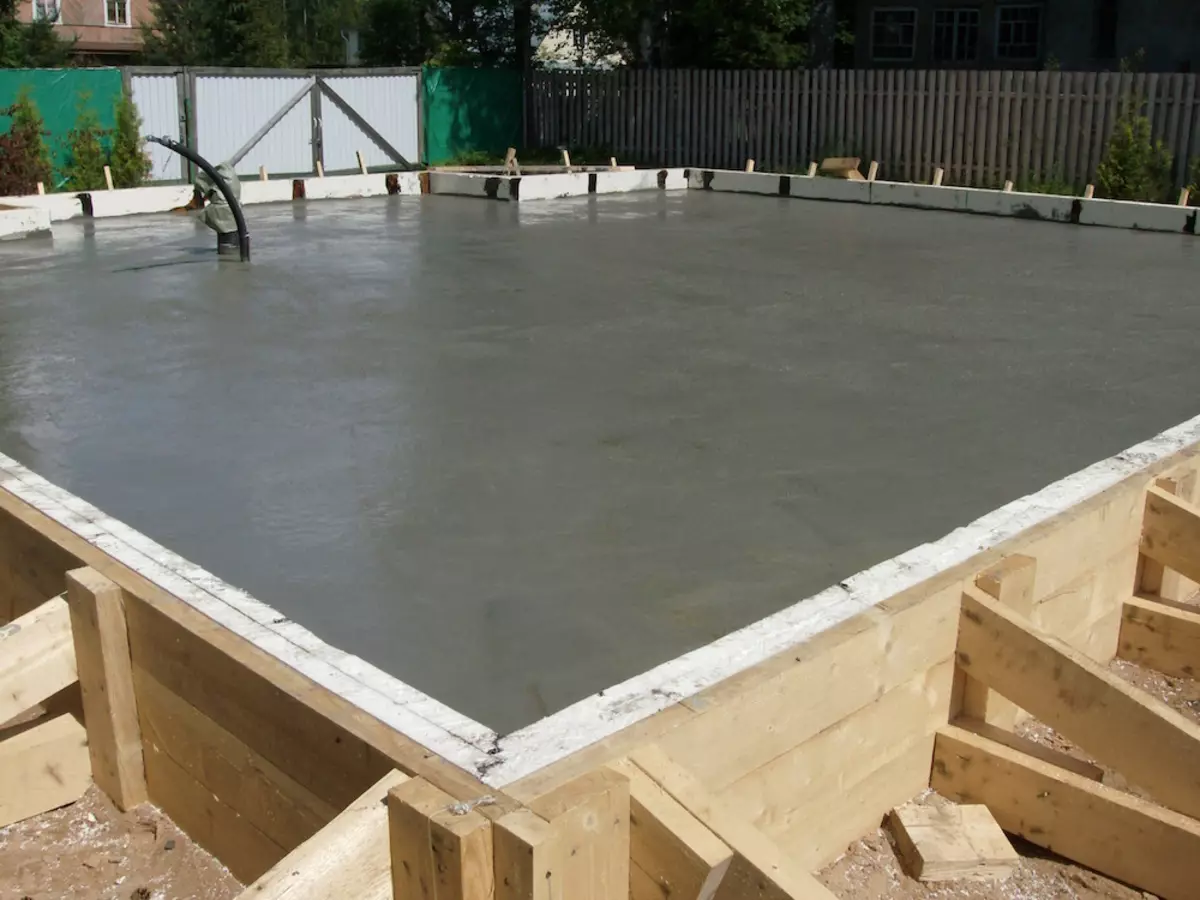
One of the optimal options for the foundation under foam block house is a warmed Swedish plate (UCH). Photo: Stonehut.
2. Careless waterproofing of walls from the foundation
The cellular concrete has high hygroscopicity, and at a small height of the base or improperly performing waterproofing (for example, the use of mastic alone) between the foundation and walls of the latter will wet (especially strongly - in the spring, during the melting of snow), which dramatically reduce the heat insulating characteristics of the fence and reduce The term of his service.
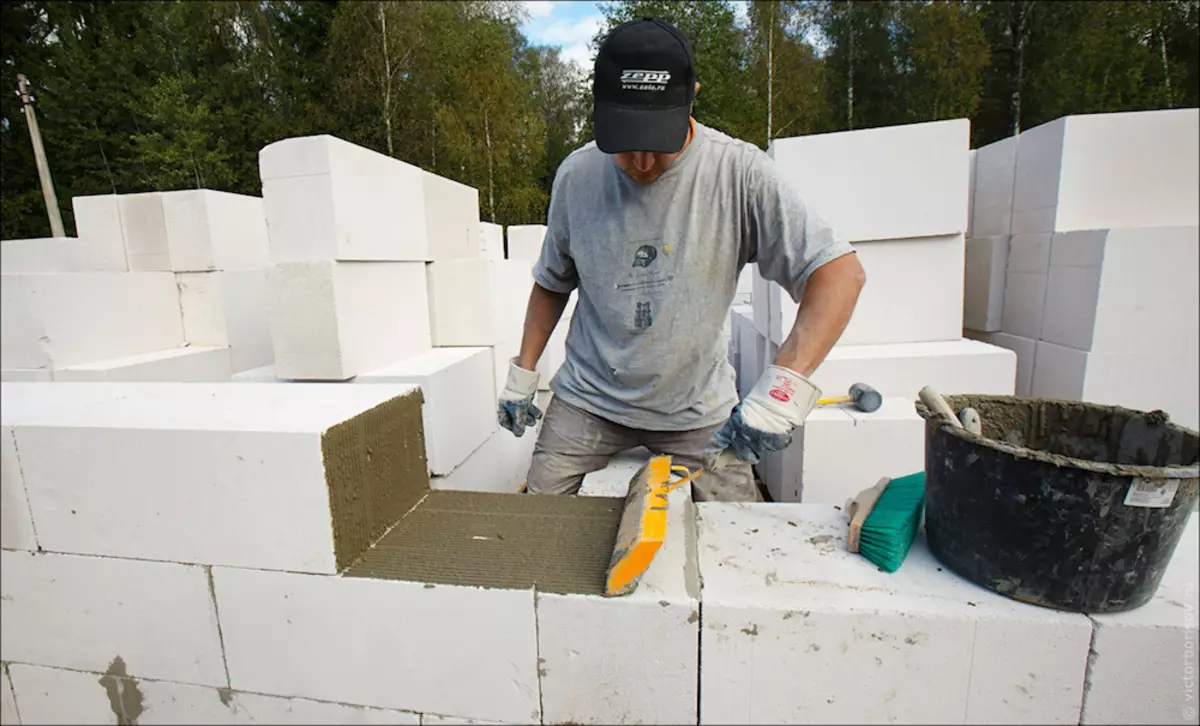
The laying of blocks are moving several times faster than brick. Photo: ytong.
3. Purchase of low density material
Building blocks from cellular concrete are of different density and, depending on the value of this parameter, are divided into three types:
a) thermal insulation (density less than 500 kg / m³, brand D300, D350, D400 according to GOST 25485-89),
b) structural heat-insulating (brands D500, D600, D700),
c) structural (brands D800 and higher).
In private construction, as a rule, block blocks D400 and D500, class of compressive strength B1 or B1,5, are used. In compliance with the technology of reinforcement, the walls of these materials are capable of perceiving the power loads arising in a low-rise building. The problem is that when buying through small intermediaries there is a risk of purchasing a lower brand products or from a defective party. What threatens it? The walls made of low density material give a significant shrinkage (which can lead, for example, to encourage windows and doors), more often crack, very badly hold fasteners, chipsets appear on them.
Therefore, to order a batch of foam blocks should be at the factory or in the official representation of the manufacturer. And even in this case it will not hurt to request copies of certificates of compliance with GOST and independently check the material for strength to the shock sclerometer.
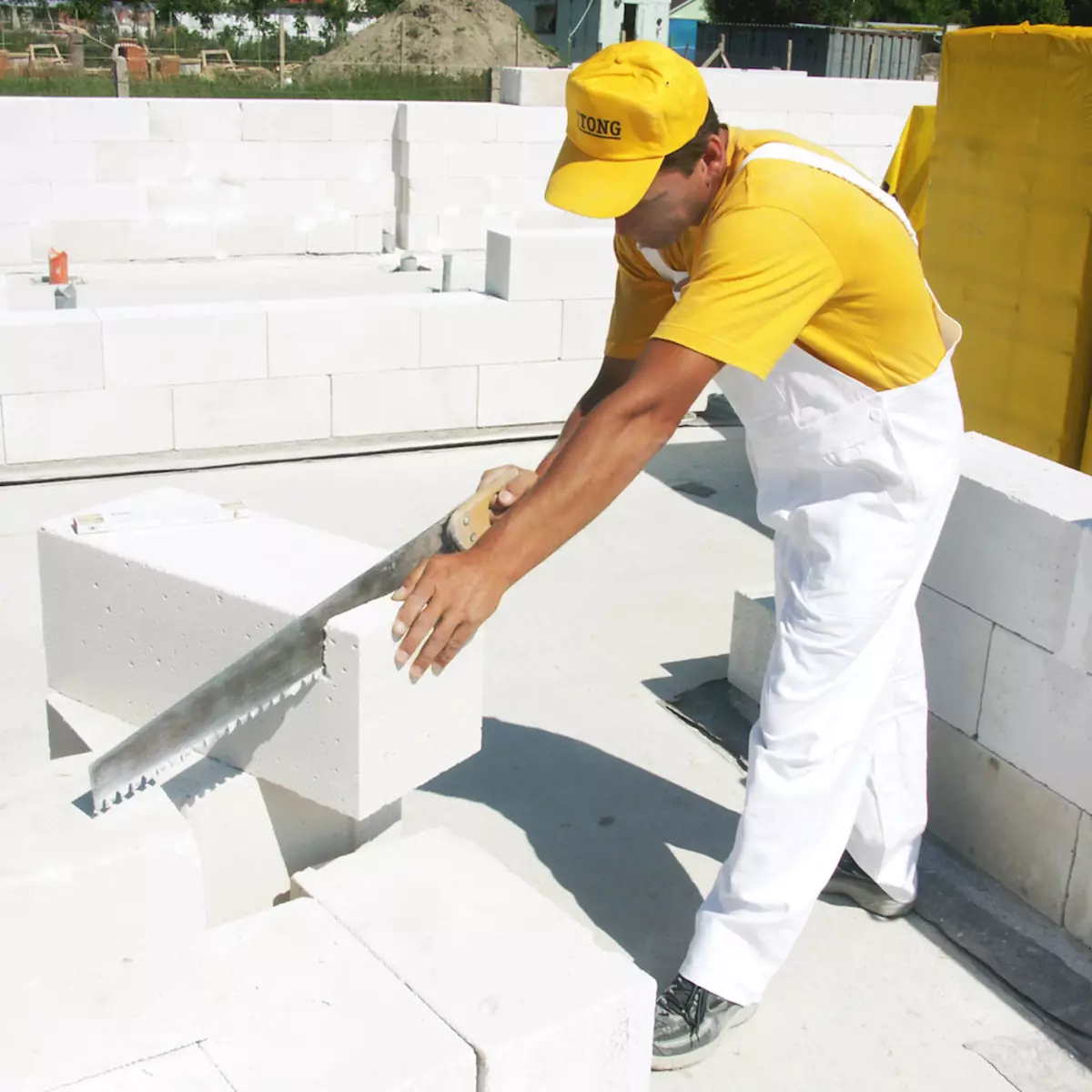
The block is pilant with hacksaw with large teeth without wiring. Photo: ytong.
4. Inattention to the geometric sizes of blocks
Foam concrete blocks made in small factories are distinguished by the instability of geometric sizes. To align the rows, the blocks have to be put on a thick (up to 10 mm) layer of the solution, which increases the consumption of the mixture and worsens the thermal insulation characteristics of the wall.
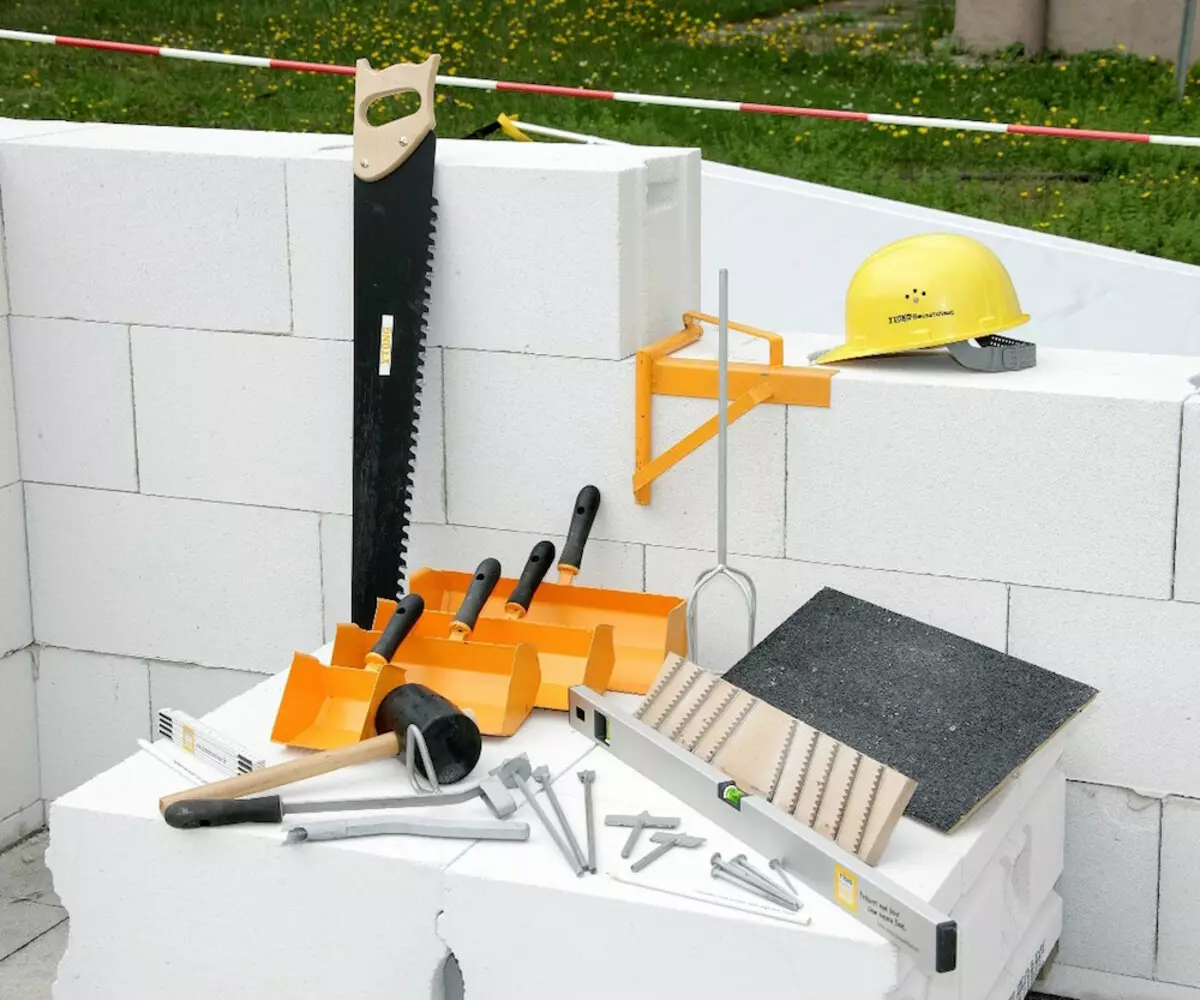
In addition to saws, a set of tools for masonry from blocks includes special cells, stereoons, grain, guide frame (stub), a xyman, a mixer for a solution and a level. Photo: ytong.
5. Masonry on a sandcate solution
During the construction of autoclave gas silicate blocks, it is advisable to use fine-glue (in fact, a cement solution, but with fine-defective filler and additives that slow down the hardening). In addition, it is possible to prepare a "warm" solution with a low density filler (for example, perlite sand) and plasticizers.
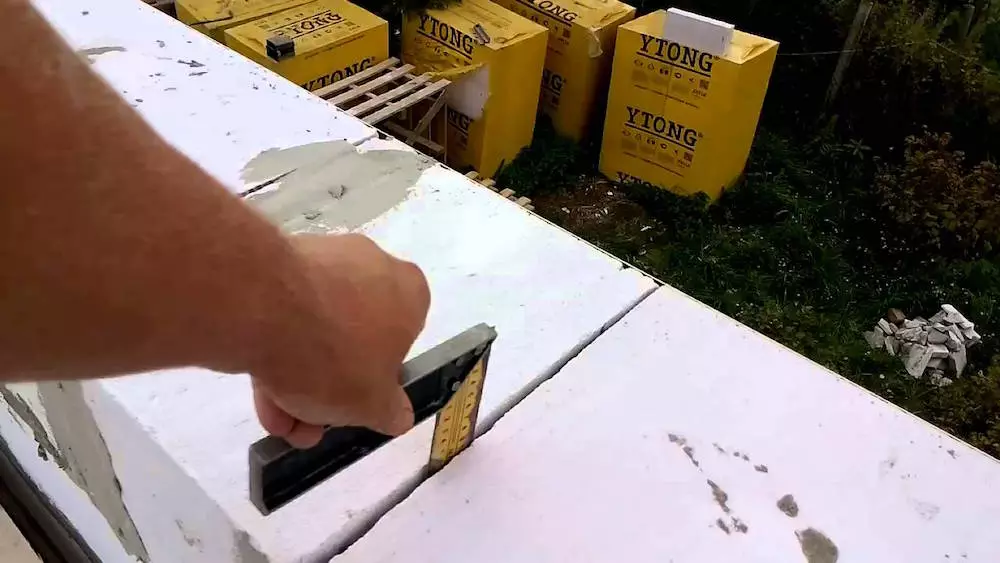
The thickness of the seams when laying on the corporate solution should not exceed 5 mm. Photo: ytong.
6. Making masonry without reinforcement or improper reinforcement of walls
It is required to reinforce the first and at least every fourth row of masonry, be sure to have a row under the windows and the zones of the support of the jumpers over the processes. For reinforcement, the basaltoplastic or other composer mesh and steel fittings for thin seams are suitable, however, it is most reliable to use steel or composite rods with a diameter of 8-10 mm, laid in the headquarters (in order not to increase the thickness of the seams) that are made by manual or electrical shutter.
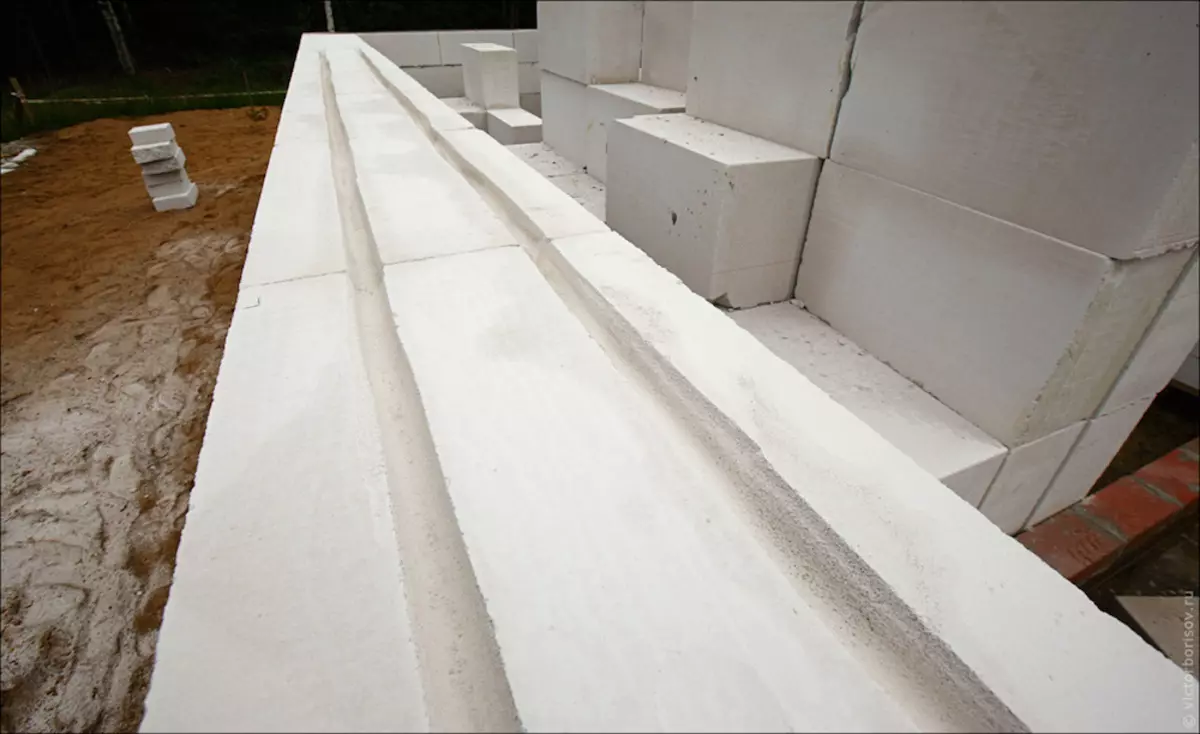
The optimal method of masonry reinforcement is two corrugated rods in strangers. Photo: ytong.
7. Removing carrier beams of overlaps (internet, attic) directly to block walls
Between the floors and under the Mauerlat broom, it is necessary to pour volumetric reinforced concrete belts. So that these belts do not become the bridges of the cold, they are isolated from the street side by polystyrene foam. In the house of gas-silicate blocks of the D400 brand, in addition, it is necessary to strengthen the opening of the inlet door, as well as window outlets with a width and height of more than 1.5 m. The amplification is performed using reinforced concrete structures, welded frames from metal rolling or wooden false kilobes.
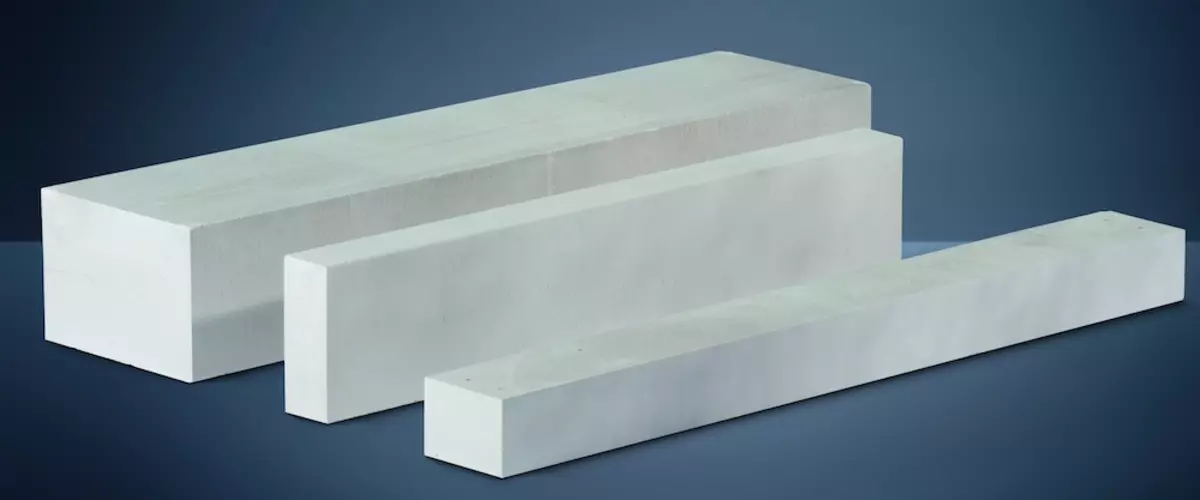
The perfumes are better overlapped with foam concrete beams with high density with steel reinforcement or blocks-trays. Photo: ytong.
8. Parosolation of walls outside
The cellular concrete easily picks moisture from the air and also easily gives it. However, if you close the walls outside with a low vapor permeability material, then they will be absorbed by moisture (mostly from room air), but it is practically stopped to dry. As a result, the microclimate in the house worsens, and the walls will begin to freeze. To prevent it, when cladding the walls with brick or mounting the mounted facade, you need to provide a ventilating gap of 20-40 mm. For the outer hydro and windproofs (under the decoration by plaquene and similar materials), only vapor-permeable membranes should be used. Warm walls made of cellular concrete foam plates with almost zero vapor permeability, extremely undesirable.
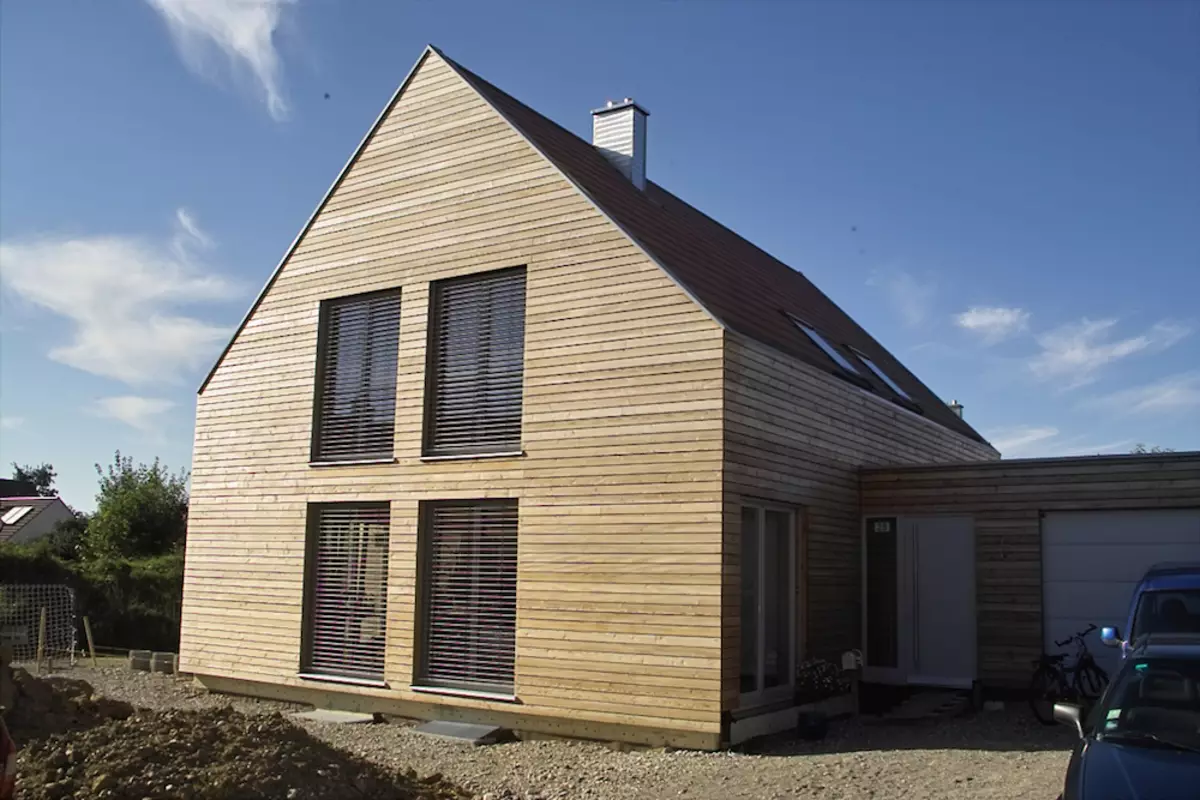
As an outdoor insulation, it is better to choose facade plates from mineral wool. Photo: Dorken.

